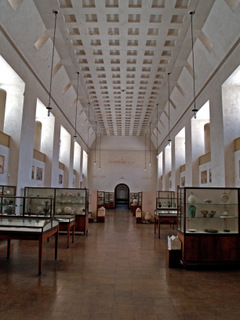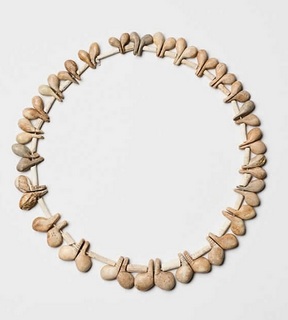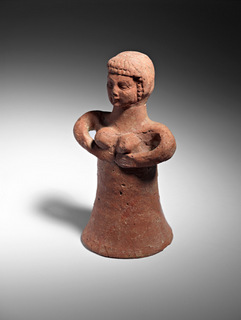In its continued efforts to share and make accessible to people around the world the

The display Gallery at Rockefeller Museum, Photographic credit: Silvia krapiwko, Courtesy of the Israel Antiquities Authority
In addition, the entire archaeological collection on display in the Rockefeller Museum in Jerusalem is being made available online, a project made possible by a lead gift from Mr. David Rockefeller with additional gifts from Jonathan and Jeanette Rosen and Paul and Eileen Growald.
The National Treasures Online project and the Rockefeller Museum Online project join a number of ambitious digitization projects undertaken by the Israel Antiquities Authority, including the Leon Levy Dead Sea Scrolls Digital Library, the National Archives from 1919 – 1948 and the Survey Maps online, making the priceless information accessible and available to the public.
In its continued efforts to share and make accessible to people around the world the
archaeological treasures of the Land of Israel, the IAA created the National Treasures Online website: www.antiquities.org.il/t/Default_en.aspx which offers a selection of thousands of objects from the collections of the National Treasures, ranging from one million BP to the Ottoman period. The site, which currently has some 5,700 artifacts, is updated continuously, and new hi-resolution images of artifacts and information are added on a regular basis. The artifacts on the site are arranged both chronologically (according to archaeological periods) and typologically (according to the type of artifact). The artifact's information card presents detailed archaeological data about the selected artifact, including provenance, type, dimensions, material, site where discovered, dating and bibliography.
Recently, the Israel Antiquities Authority embarked on a major undertaking to make available through the internet, hi-resolution digital images of and information about the rare archaeological collections that are on display in the Rockefeller Museum in Jerusalem. This online project is another example of the IAA’s commitment to providing meaningful, unlimited and easy public access to the nation’s archaeological treasures. The project is made possible by a generous lead gift from Mr. David Rockefeller, son of John D. Rockefeller Jr. who established the museum, with additional support from Paul and Eileen Growald and Jonathan and Jeanette Rosen. This is the first time the entire collection on display of a museum in Israel is being photographed and made available online.
On January 13, 1938, The British Mandatory Government of Palestine opened The Palestine Archaeological Museum in Jerusalem. Known informally at the time as The Rockefeller Museum, because of John D. Rockefeller Jr.’s gift of two million dollars to erect the building and house the collections properly, the museum continues to hold one of the most important collections of archaeological objects excavated in the Land of Israel during the early part of the Twentieth century. More than 5,000 artifacts are in the collection, managed by the Israel Museum, most of which were excavated during the British Mandatory period in the 1920’s and 1930’s at important sites such as the prehistoric caves in the Carmel Mountain, Jericho, Megiddo, Samaria, Beth Shean, Tel El-Ajjul, Khirbet El Mafjar, and Ovdat. The collection spans more than 1.5 million years, from prehistoric periods to the time of the Ottoman Empire.
Having the hi-resolution images and accompanying information available to millions of people anywhere in the world is of tremendous importance to everyone interested in the archaeology and history of the Land of Israel.
The Rockefeller Museum
The Palestine Archaeological Museum, more commonly known as the Rockefeller Museum, was opened in Jerusalem in 1938 with funds provided by John D. Rockefeller Jr. to the British Mandatory Government. The museum displays one of the most important collections of archaeological objects excavated in the Land of Israel in the early part of the Twentieth century. More than 5,000 objects are on display, most of which were excavated during the British Mandate period in important sites as the prehistoric caves in the Carmel Mountain, Jericho, Megiddo, Samaria, Beth Shean, Tel El-Ajjul, Khirbet El Mafjar, Ovdat and others.
The objects are displayed in two main galleries and are arranged in a chronological order, representing some 1.5 million years, from prehistoric periods to the Ottoman period. Highlights of the collection include:
Pre-historic bone, stone and flint objects, especially the Natufian period objects from the Kebara Caves in the Carmel range – bone pendants, necklaces, bone sickles and blades, carved ivory and bone animals and more.
Pottery vessels representing the finest collection of such vessels excavated in the Land of Israel, from the Neolithic to the Ottoman period.
Gold, silver and bronze objects, especially the fabulous, rare and important collection of gold jewelry from Tell El-Ajjul, dating to the Second millennium BCE.
Seals, ostracons and seal impressions, specifically the collection of the “Lachish Letters” dating to the Israelite period.
Ivory and bone objects, specifically the famous and rare treasure of Ivories from Megiddo, dating to the 12th century BCE and excavated by the Oriental Institute, University of Chicago.
Pottery, bronze and marble figurines, sarcophaguses, cult stands, carved architectural pieces dating from the Israelite period to the Crusader period, from important si

Necklace, Me'arat a-Nahal , Natufian Period , Photographic credit: Meidad Suchowolski, Courtesy of the Israel Antiquities Authority

Female Figurine, Sha'ar a Golan, Pottery Neolithic, 6th Millenium BCE, Photographic credit: Clara Amit, Courtesy of the Israel Antiquities Authority
Additional Articles ...